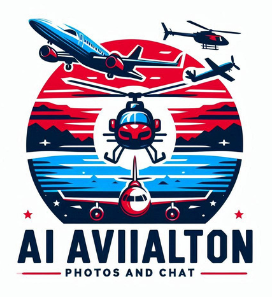Artificial intelligence is flipping the script when it comes to designing helicopters. Imagine blending cutting-edge technology with traditional aviation engineering; that’s what AI is achieving in this thrilling sector.
AI-driven design means more than just flashy computer models. It’s about smarter, more efficient workflows where complex problems get tackled using algorithms that digest vast data sets faster than ever. Engineers use AI to simulate tasks, spot potential hitches, and optimize materials – saving both time and resources.
While there’s undeniable excitement around AI, it’s not all smooth sailing. Integrating these advanced systems presents a learning curve. Navigating regulatory frameworks, ensuring fail-safes for AI decisions, and aligning new tech with existing manufacturing processes are just a few challenges the industry’s tackling.
Diving into real-world examples makes the impact tangible. Take recent projects where AI applications helped craft lighter and more aerodynamic prototypes, reducing drag and fuel consumption while boosting performance. These cases show AI’s potential for transforming designs from blueprints to breakthrough innovations more efficiently and sustainably.
AI and Enhanced Instrumentation: A Quantum Leap in Performance
AI isn’t just a buzzword in helicopter instrumentation; it’s becoming the backbone for transforming avionics and cockpits into more intuitive and efficient workspaces for pilots. This transformation means better decision-making tools, which can help pilots focus on flying and safety.
Think about AI as the co-pilot you never knew you needed. These smart systems analyze real-time data, adjust displays, and offer suggestions instantly, making the whole flying experience a lot smoother and safer. With AI, pilots find that decision-making becomes faster and far more precise as they’re equipped with information that’s relevant and digestible.
The cherry on top? Predictive maintenance. Helicopters with AI systems can identify mechanical issues before they spiral into big problems. This means fewer unexpected breakdowns and more dependable performance. It’s like having a mechanic on board, catching issues early, and saving both time and money.
Getting into the minds of those using these innovations, it’s clear why pilots and engineers are on board with AI-enhanced instrumentation. It’s about making the entire operation safer, more efficient, and increasingly reliable. AI systems help spot anomalies in data patterns, providing insights that weren’t easily accessible before.
Revolutionizing Helicopter Capabilities: Speed, Range, and Beyond
AI is pushing the boundaries of what’s possible in terms of helicopter speed and range. These tech-driven advancements are turning yesterday’s limits into today’s capabilities, making flights faster and further—a crucial development for modern aviation demands.
With AI in the co-pilot’s seat, helicopters are achieving better fuel efficiency, thanks to clever algorithmic insights. Think of it like optimizing your drive for fewer gas guzzling stops, only in the sky. AI can crunch numbers on-the-fly, tweaking flight paths and engine performance for maximum efficiency.
Real-world scenarios highlight just how powerful these changes are. Consider missions that require long-range capabilities—here, the blend of AI with engineering precision enables helicopters to travel further distances without exhausting resources or compromising on speed.
The blend of AI technology in helicopters symbolizes a shift in approach—a move towards more intelligent flight systems that can navigate complex variables effortlessly. It opens doors not just to enhanced performance but also to new possibilities in rescue operations, firefighting, and even commercial use, effectively setting a new standard in what helicopters can achieve.
